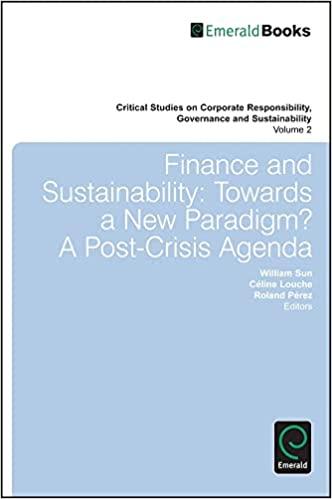Question
Begin with the equally weighted portfolio analyzed in Chapter 10. Establish the portfolio returns for the stocks in the portfolio using a formula that depends
Begin with the equally weighted portfolio analyzed in Chapter 10. Establish the portfolio returns for the stocks in the portfolio using a formula that depends on the portfolio weights. Initially, these weights will all equal 1/12. You would like to allow the portfolio weights to vary, so you will need to list the weights for each stock in separate cells and establish another cell that sums the weights of the stocks. The portfolio returns for each month must reference these weights for Excel Solver to be useful. 2. Compute the values for the monthly mean return and standard deviation of the portfolio. Convert these values to annual numbers (as you did in Chapter 10) for easier interpretation. 3. Compute the efficient frontier when short sales are not allowed. Use the Solver tool in Excel (on the Data tab in the analysis section).* To set the Solver parameters: a. Set the target cell as the cell of interest, making it the cell that computes the (annual) portfolio standard deviation. Minimize this value. b. Establish the By Changing Cells by holding the Control key and clicking in each of the 12 cells containing the weights of each stock. c. Add constraints by clicking the Add button next to the Subject to the Constraints box. One set of constraints will be the weight of each stock that is greater than or equal to zero. Calculate the constraints individually. A second constraint is that the weights will sum to one. d. Compute the portfolio with the lowest standard deviation. If the parameters are set correctly, you should get a solution when you click Solve. If there is an error, you will need to doublecheck the parameters, especially the constraints.Next, compute portfolios that have the lowest standard deviation for a target level of the expected return. a. Start by finding the portfolio with an expected return 2% higher than that of the minimum variance portfolio. To do this, add a constraint that the (annual) portfolio return equals this target level. Click Solve and record the standard deviation and mean return of the solution (and be sure the mean return equals targetif not, check your constraint). b. Repeat Step (a) raising the target return in 2% increments, recording the result for each step. Continue to increase the target return and record the result until Solver can no longer find a solution. c. At what level does Solver fail to find a solution? Why? 5. Plot the efficient frontier with the constraint of no short sales. To do this, create an XY Scatter Plot (similar to what you did in Chapter 10), with portfolio standard deviation on the x-axis and the return on the y-axis, using the data for the minimum variance portfolio and the portfolios you computed in Step 4. How do these portfolios compare to the mean and standard deviation for the equally weighted portfolio analyzed in Chapter 10? 6. Redo your analysis to allow for short sales by removing the constraint that each portfolio weight is greater than or equal to zero. Use Solver to calculate the (annual) portfolio standard deviation for the minimum variance portfolio, and when the annual portfolio returns are set to 0.05, 0.1, 0.2, 0.3, and 0.4. Plot the unconstrained efficient frontier on an XY Scatter Plot. How does allowing short sales affect the frontier? 7. Redo your analysis adding a new risk-free security that has a return of 0.5% (0.005) each month. Include a weight for this security when calculating the monthly portfolio returns. That is, there will now be 13 weights, one for each of the 12 stocks and one for the risk-free security. Again, these weights must sum to 1. Allow for short sales, and use Solver to calculate the (annual) portfolio standard deviation when the annual portfolio returns are set to 0.05, 0.1, 0.2, 0.3, and 0.4. Plot the results on the same XY Scatter Plot, and in addition keep track of the portfolio weights of the optimal portfolio. What do you notice about the relative weights of the different stocks in the portfolio as you change the target return? Can you identify the tangent portfolio?
my question would be how would I find the Weights of risky stocks in the efficient portfolio? with the 12 stocks and one risk free assest
Step by Step Solution
There are 3 Steps involved in it
Step: 1

Get Instant Access to Expert-Tailored Solutions
See step-by-step solutions with expert insights and AI powered tools for academic success
Step: 2

Step: 3

Ace Your Homework with AI
Get the answers you need in no time with our AI-driven, step-by-step assistance
Get Started


